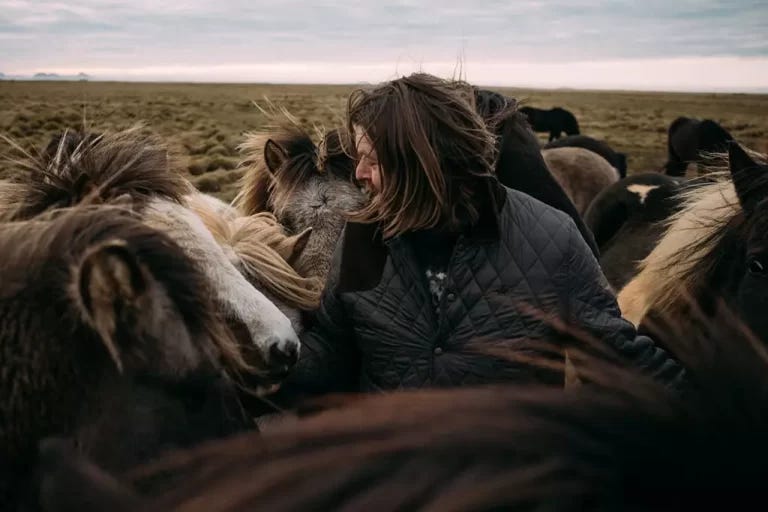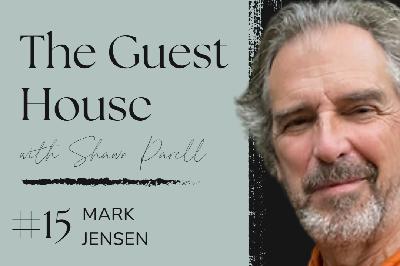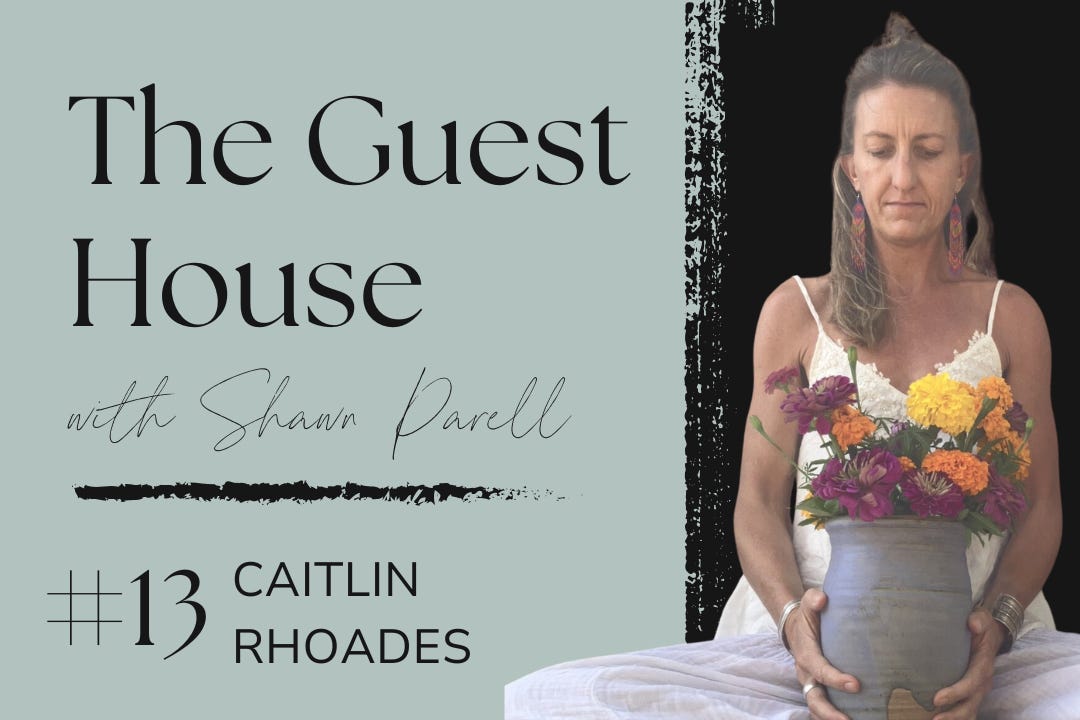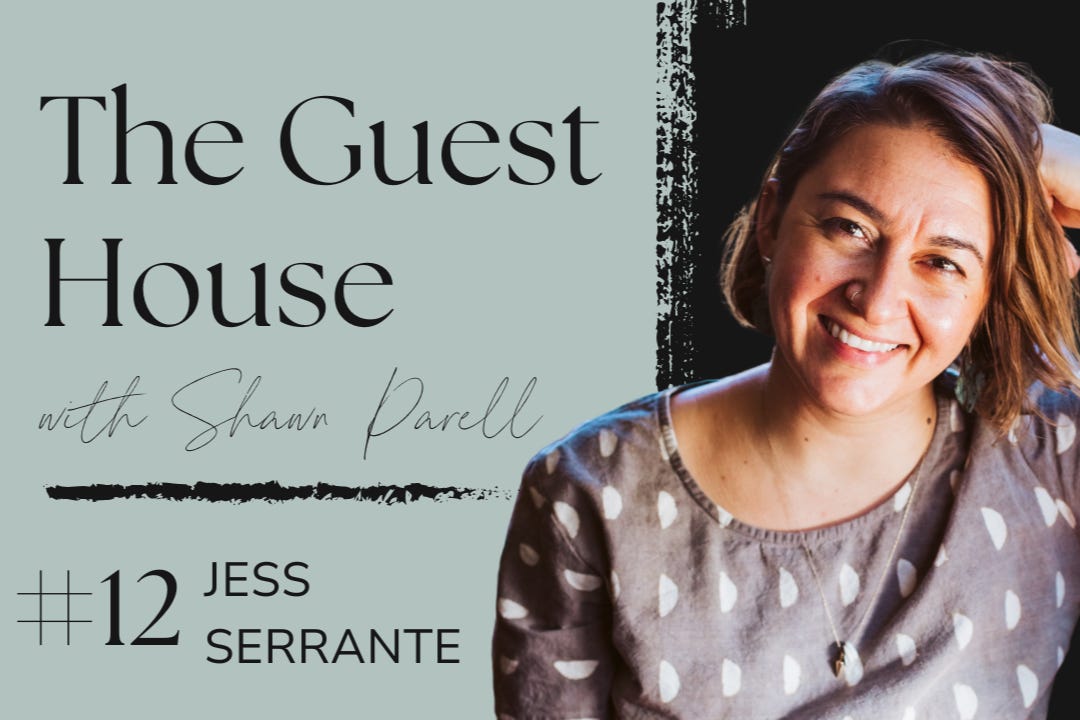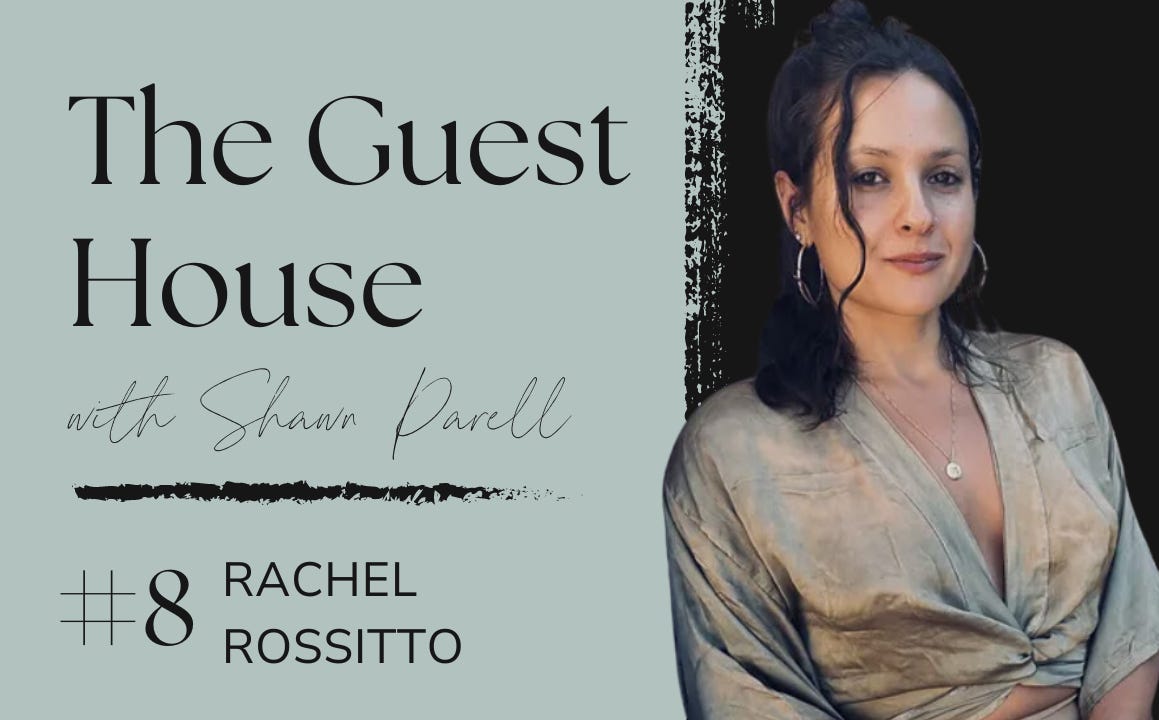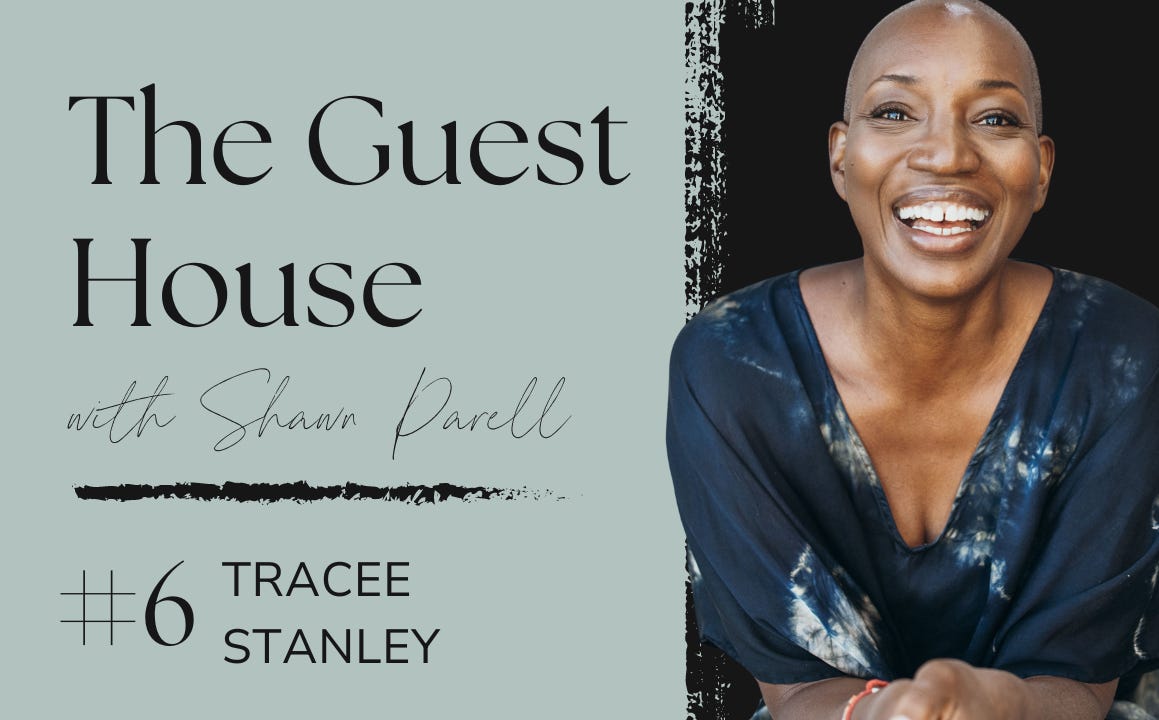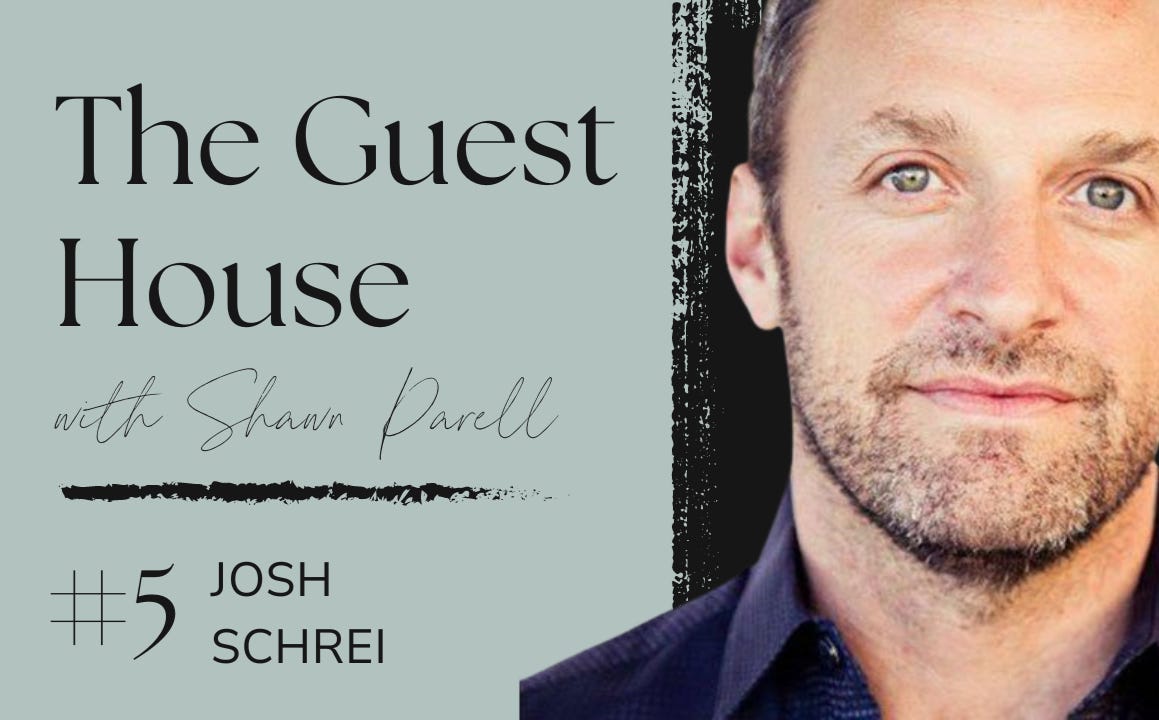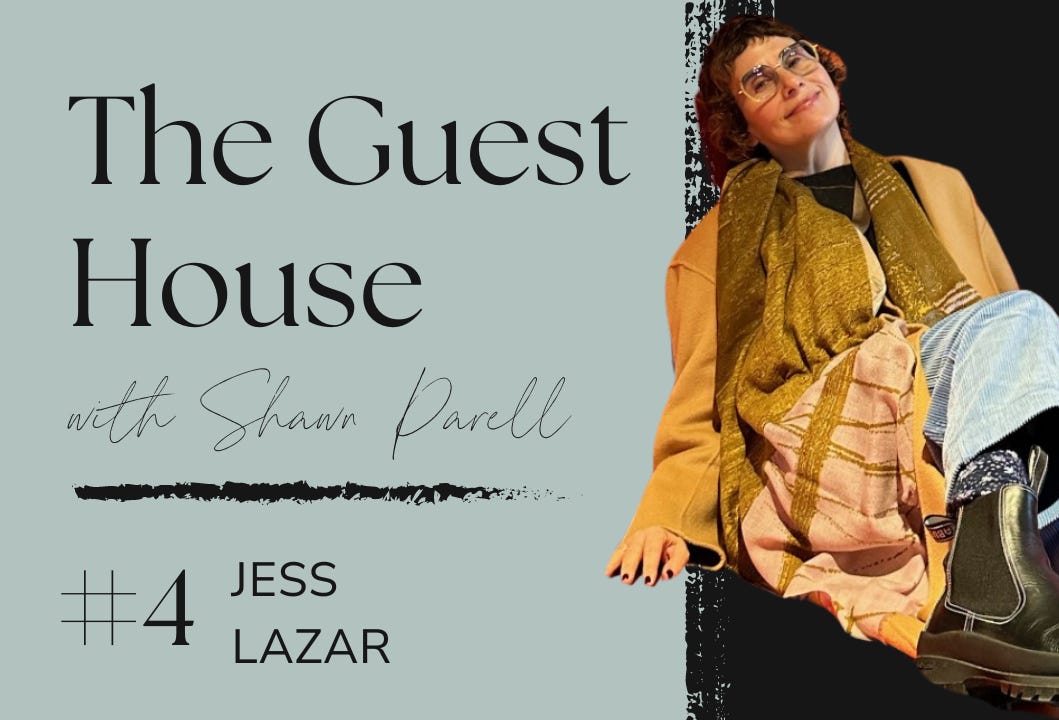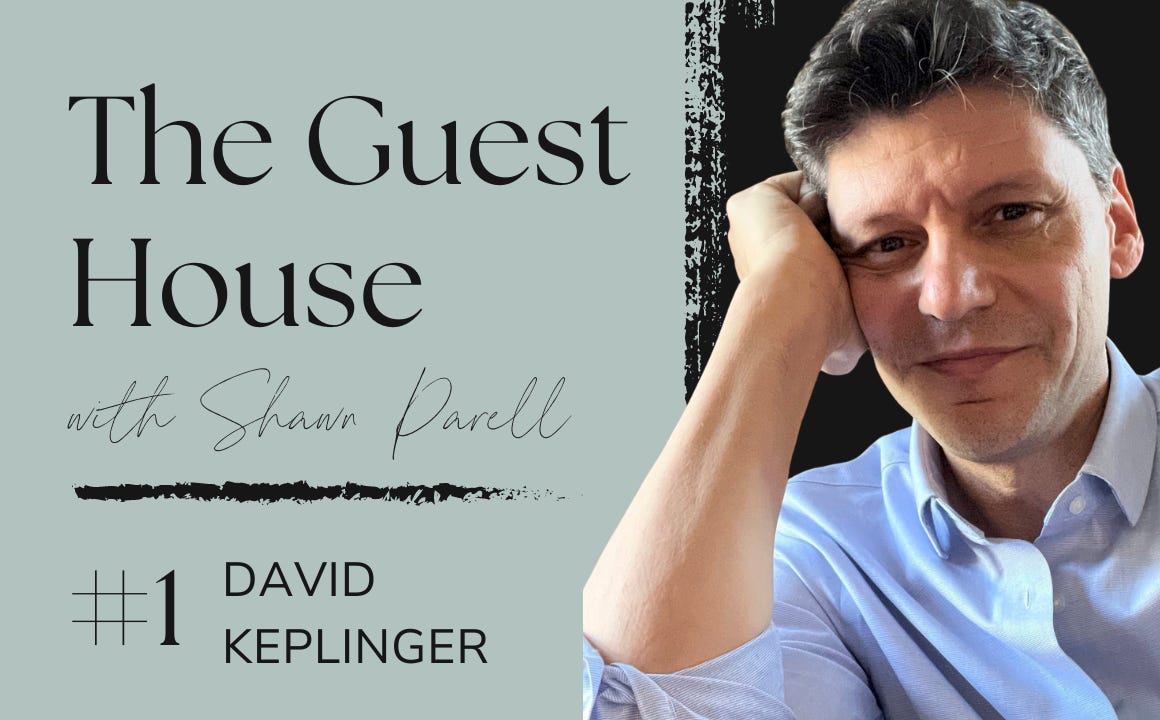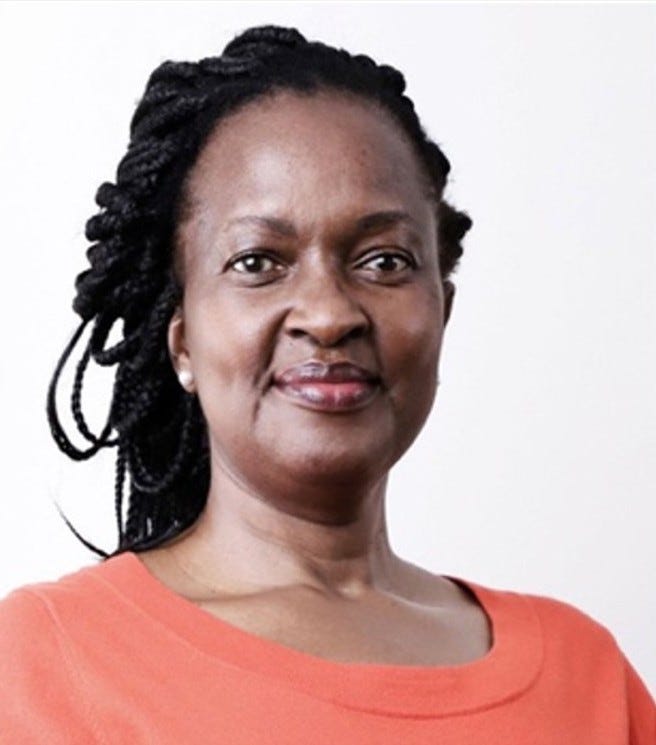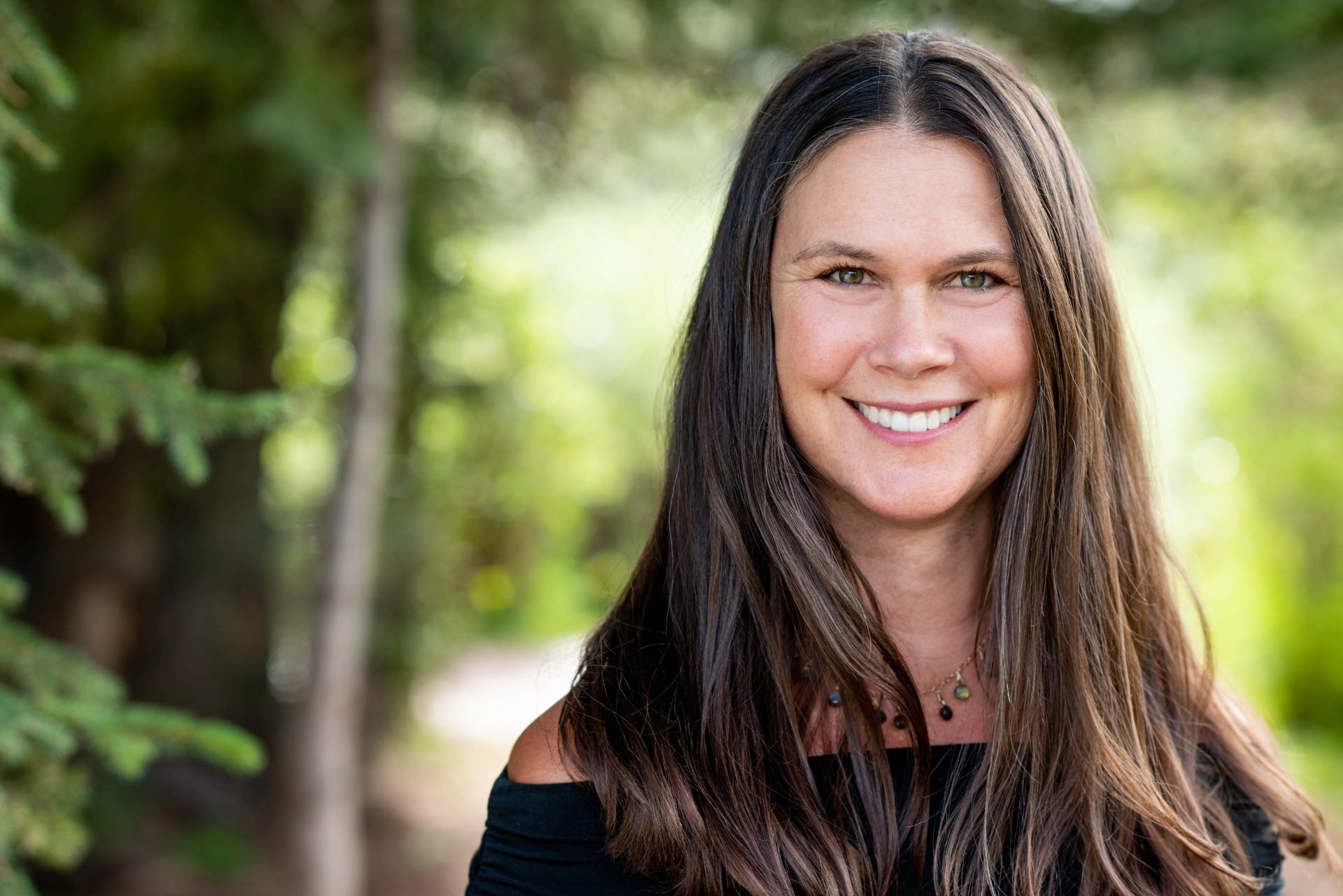These Fleeting Temples We Make Together
Description
You’re invited next September 20-26, 2026, to The Tender Harvest, a week-long retreat amidst the golden hues and organic bounty of the world-class Ballymaloe House in County Cork, Ireland. Each day will feature yoga, meditation, farm-to-table meals, and curated excursions—plus ample time for rest, self-nurturance, and imagination.
...
Hordur is a descendent of Vikings. To arrive at his farm—4,000 windswept acres in Iceland’s storied BrennuNjáls Saga—is to step into an atmosphere rich with the scent of sulfur and soil, into a dramatic expanse of earth blanketed under heavy, silver-wrapped clouds.
The light here is diffuse yet piercing, the landscape at once strange and wondrous—alive with an elemental force that reshapes the breath in our bodies as we ride through quick-watered rivers and cold, lush fields. I find my mind traversing the natural observations and human meanings of Annie Dillard’s Teaching a Stone to Talk: Expeditions and Encounters:
“We are here to witness the creation and to abet it. We are here to notice each thing so each thing gets noticed. Together we notice not only each mountain shadow and each stone on the beach but, especially, we notice the beautiful faces and complex natures of each other. We are here to bring to consciousness the beauty and power that are around us and to praise the people who are here with us. We witness our generation and our times. We watch the weather. Otherwise, creation would be playing to an empty house.”
Around a rustic dinner table of slow-cooked lamb and homegrown potatoes, Hordur shares some of his story with us. He recounts having lived abroad for decades, mastering the language of markets and margins in glass atriums of international finance—until, at fifty, an inexplicable, tectonic force called him home to the basalt and moss-softened fields that have cradled his lineage for a millennium.
He explains simply: “I wanted to raise Icelandic children.”“But what does that mean to you?” we press.
Hordur pauses briefly, then recalls the day his youngest, seven years old, began hitchhiking the thirty-minute ride from school. Through valleys quilted with lupine and sheep, she returned home each afternoon this way for a decade, delivered safely again and again by a series of outstretched hands.
To absolutely trust one’s human surroundings is unfathomable to most parents. It points to an agreement not imposed by law, but woven into the fabric of society over generations, more gradually grown than moss over volcanic rock.
It’s good to know communities on earth still exist where children are this safe. It’s good to know that somewhere, the fabled qualities of the village are alive and well.
In a climate forged by fire and ice, tenderness is a currency of survival. Iceland has no standing military and virtually no violent crime. Babies nap outside in woolen blankets. Winter’s deep darkness—which consumes all but three hours of each day—is not dulled by drinking at bars but thawed and warmed in local geothermal pools. And, in the northern town of Akureyri, stoplights shaped like glowing red hearts—signaling people to stop in the name of love—began appearing during the 2008 economic collapse as emblems of support and resilience.
One might be tempted to dismiss these signs of communal health as the baked-in benefits of a homogeneous culture, but the science and art of the commonweal warrant a deeper look.
With what conditions can safety pattern itself into a nervous system? How can our collective nervous system down-regulate from its ratcheting mistrust? These are the questions of our times if we are ever to find our way back to ourselves and each other. They have no right to go away when our mutual keeping hangs in the balance.
In the poem Small Kindnesses, Danusha Laméris writes:
“What if they are the true dwelling of the holy, these fleeting temples we make together when we say, ‘Here, have my seat,’ ‘Go ahead—you first,’ ‘I like your hat.’”
Years of teaching retreats in far-flung destination have sensitized me to Laméris’s notion of the “fleeting temples” we create. Strangers arrive without their creature comforts or daily certainties, often hesitant, eyeing each other warily, clutching their schedules and habits. Yet, by stepping into the strangeness of a new landscape and the invisible contours of each other’s lives, an organic, humanizing process begins to take shape. Stories and tinctures are exchanged; borrowed layers keep folks warm; adapters connect devices and new friends. Laughter begins to roll across the table. And then, on a long bus ride at day’s end, a head finds another’s shoulder to rest on: nascent, ephemeral, yes—but a temple nonetheless.
“We have so little of each other, now. So far from tribe and fire. Only these brief moments of exchange,” Laméris’ poem admits. Trust is woven where human beings sew threads of kindness, respect, generosity, and mutual accountability. Intrinsic to our nature is this capacity to lean in, but our dignified work is to thread and re-thread our humanity, even in a darkening season.
Stripped of the luxury of self-isolation, we confront what Annie Dillard refers to as “our complex and inexplicable caring for each other, and for our life together here.” This is our human weave, complex and inexplicable: the mycelium of our mutual existence.
The famous children’s book asks, “Do you like my hat?” “I like your hat.” A benign, basic affirmation—just enough to signal safety to a nervous system. But out of these small kindnesses—a compliment, a door held open, a gentle word—the labor of civilization can begin anew.
The day we return from Iceland, a vignette in juxtaposition: a grandmotherly figure spits an insult out the window of her car in our direction. My children freeze in the backseat, stunned by the woman’s venomous words and their unsparing ordinariness.
Laméris’ poem laments this modern ache:“Mostly, we don’t want to harm each other… We want to be handed our cup of coffee hot, and to say thank you to the person handing it. To smile at them and for them to smile back.”
When kindness is withheld, when someone’s pain is weaponized, some small but vital part in the mycelium tears. We feel the acute loneliness of being “far from tribe and fire,” and understand how the agitation that surrounds us gives tenderness more weight.
Years have passed since Hordur returned to Iceland. He spends his days farming garlic, carrots, and potatoes in coarse soil, raising lamb on mountain herbs. His horses belong to one of the world’s oldest breeds—descendants of ninth-century stock. They graze in grassy fields through every season, their manes wind-whipped and their temperaments famously resilient.
When asked how their nervous systems have evolved to be so even-keeled through the centuries, Hordur points out that Icelandic horses have no natural predators. They are exposed to the elements, he explains, and they prefer to weather Iceland’s brutal winters not alone in barn stalls, not in “an empty house” of creation, but with their fellow horses in an open field.
Together, we are making sense of being human in an era of radical change. Your presence here matters. Thank you for reading, sharing, ‘heart’ing, commenting, and subscribing to The Guest House.
This is a public episode. If you'd like to discuss this with other subscribers or get access to bonus episodes, visit shawnparell.substack.com/subscribe

